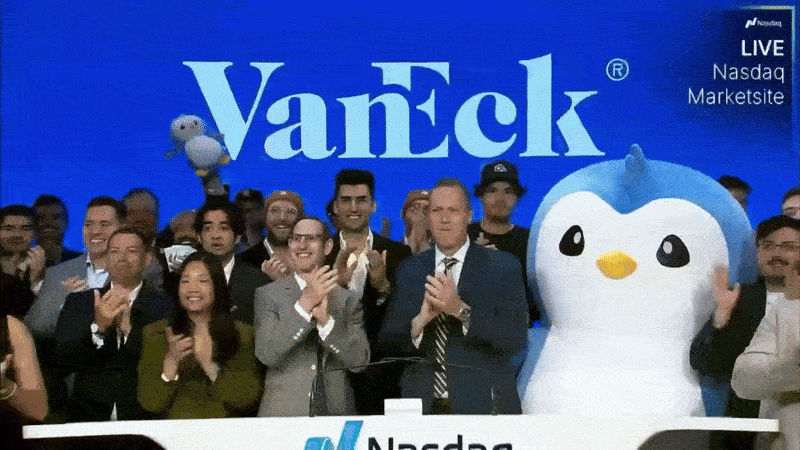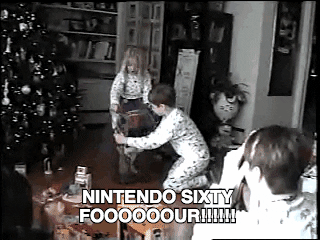- Shiny Thing$
- Posts
- ✨$T 0195: The Meaning of Money
✨$T 0195: The Meaning of Money
The slow, irrational return of emotion in investing

There’s a reason we slow down when we see something familiar in a museum. It’s not about rarity, it’s about recognition. It reminds us that what once felt disposable can become sacred and the “fundamentals” honestly aren’t that important. Lately, it feels like the markets are starting to figure that out too.
Emotion is winning.
Is it smart? Maybe not. But it’s the right-now, and if you aren’t betting with emotion and following the momentum, then theres a good chance you’re underperforming a 19 year old in a basement somewhere who makes moves based almost entirely on vibes.
In this week’s edition of Shiny Thing$, we take a high-level look into the three corners of the market that affect the Rally community most - equities, crypto, and collectibles - and make the argument for emotion as a driver for momentum.
But first, this week’s headlines in the world of money & markets…
🏦 Figma’s IPO Made Some People Rich. REALLY Rich.
Figma, the design software company, went public on Thursday with an IPO that opened to the public at $33, closed at $117, and pushed even higher after hours to nearly $145 by nightfall. The 30x oversubscribed deal minted instant wealth for early investors, but also reignited criticism around the IPO process, where banks underprice offerings to manufacture big wins for their clients, often leaving the company billions short. [read more…]
💰 Private Markets Might Finally Open to Everyone
On the topic of IPO allocation… for decades, private investments were off-limits unless you had a million-dollar net worth or a six-figure salary. A new bill, titled the “Equal Opportunity for All Investors Act,” aims to change that, allowing 401(k)s into private markets and letting more people qualify as accredited investors via a free financial literacy test. It’s a potential unlock for access to the kind of deals the 1% take for granted. [read more…]
🏈 Tom Brady, Card Collector-in-Chief
Tom Brady is deep into his cardboard era. This week he opened his sixth “Card Vault by Tom Brady” across the street from Wrigley Field, timed with the National Sports Card Convention in Chicago. He showed up in person, signed autographs, and reminded everyone he’s not just collecting rings - he’s collecting grails, like the $250K LeBron rookie he bought on the spot at Fanatics Fest earlier this year. [watch the recap…]

The slow, irrational return of emotion in investing
In a well-lit corner of the British Museum sits a battered wooden board, no larger than a hotel tray. It’s old... 4th century. And for a thousand years, it was used as a table, a door, and eventually, a backing for a painting long since lost. It is, by every objective measure, useless today.
And yet, here it is. Carefully placed under glass. Priceless.
If you’ve walked through a museum lately, you know the feeling. You linger in front of an object that, for most of its life, was mundane and meant purely for utility. A coin. A broken sword. A sneaker that was worn by one athlete in one game out of thousands of individual games. Built to be used and then forgotten. Now sacred.
Markets are starting to look like that.
Not the spreadsheet kind. Not the ones where you punch in discounted cash flows and wait for a number to spit out. We’re taking real markets. The ones that operate in the subtext of financial headlines. The ones that respond to a childhood memory like it’s a signal. The ones that pay $8,000 for a cereal box because it was on your kitchen counter when you were a kid and now it means a lot more than it did back then.
This isn’t speculation. It’s sentiment. And that distinction might be the key to understanding where value is heading next.
· · ·
The Age of the Algorithm
For the past 40 years, capital chased certainty. The quants won. The traders with the fastest connections and cleanest models moved billions in microseconds. Human emotion was seen as a bug in the system and the enemy of real money - a margin of error to be corrected, hedged, or ignored.
But something has changed.
Maybe it was Covid, or the GameStop fiasco that followed, or the collective understanding that retail investors with a “f*ck this rigged system that wants to keep us out” attitude finally mobilizing. Or maybe it was just the right time for something new.
But that change in mindset hit everything.
Start with crypto. A currency designed to be trustless has become almost entirely faith-based. Coins named after dogs, or farts, or emojis regularly outperform meticulously engineered protocols. Solana and Ethereum were writing whitepapers; $PENGU, the Pudgy Penguins token, pushes its mascot and does account takeovers on twitter. It was up 150% in July btw.

Or look at equities. Stocks with no earnings, no moat, and no real plan have been bid up because a telegram chat has targeted it as “the next GameStop,” or because “it feels like this one might run.” Analysts call this irrational. Retail calls it instinct.
This isn’t a failure of math. It’s a re-weighting of memory.
· · ·
The Era of Meaning
Ask any serious collector what they’re looking for, and you’ll rarely hear the word “yield.” They talk about feeling. When they unexpectedly got that Nintendo for Christmas and played Mario Bros for 3 days straight. The moment they first saw a Jordan jersey on TV. The smell when you open a new pack of baseball cards. The cover booklet of a CD that they got in high school - this is particularly true of the millennial market that watched the analog method of consuming music go from physical, to MP3, to streaming.
These aren’t investments- they’re time machines.

But the world caught on. These time machines, it turns out, are investable. And in a market where everything is either commoditized or tokenized, a one-of-one with a story suddenly has alpha.
We’re watching it happen in real time.
A $30.5M dinosaur skeleton that would fit in a spare room.
A LeBron jersey sells for nearly $4M, while he’s still active in the league.
An Hermès prototype bag that once lived on Jane Birkin’s shoulder, sold to a Japanese resale syndicate who will never wear it, but understand what it means.
The more digital the world becomes, the more people crave proof that something existed in their hands. It’s about reaching through time, and pulling a piece of it into the present.
· · ·
The “Museum Logic”
The traditional market asks: What’s it worth?
The nostalgic market asks: What’s it mean?
You can’t chart that on Bloomberg. You can’t find it in a prospectus. But you can feel it, and if you’re honest, you can probably price it better than most.
Museums have known this forever. That’s why there are places with a 2002 Sony Discman a stones throw from an ancient Egyptian relic. Because at some point, we realized that human impact is what creates permanence, not logic.
What we’re seeing in collectibles, in culture, and in markets, is the museumfication of the present. The artifacts of our youth, our media, our sports, and our moments are being elevated. Placed behind glass. Traded. Fought over. Worshipped. And whether you like it or not, that’s how legacy is formed now.

Long story short - the math stopped working the way it used to.
High interest rates and tight monetary policy are supposed to cool down the markets. But try telling that to the guy who paid $2,000,000 for a sealed video game, or to the consortiums forming to buy a meteorite or a handwritten Tupac poem.
Somewhere along the line, we decided we wanted to feel something again. And feeling is inefficient. But it’s also honest.
· · ·
We’re betting that the most valuable assets of the next decade won’t be the most productive… they’ll be the most personal. The ones that remind you of who you were, and whisper who you still are.
Markets are starting to feel the same. And the smartest investors? They’re not just following the numbers anymore. They’re listening for a heartbeat.
Once making money is completely programmable, you’ll get bored of it (that sounds insane, but ask any high-stakes gambler why they do it and the answer won’t be “for the money”)...
…but more than that, you’ll try to find purpose and revert back to the manual method of making it all work. And maybe, owning with purpose outside of just value.
We’re here for it.
Until next week…
